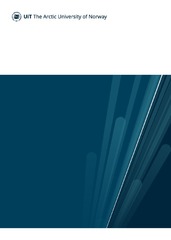| dc.contributor.advisor | Mittner, Matthias | |
| dc.contributor.author | Boayue, Nya Mehnwolo | |
| dc.date.accessioned | 2020-08-14T12:12:22Z | |
| dc.date.available | 2020-08-14T12:12:22Z | |
| dc.date.issued | 2020-08-28 | |
| dc.description.abstract | The mind’s tendency to wander is an integral part of the human experience.
Recent studies suggest that high-level cognitive functions such as mind wan-
dering (MW) can be modulated by non-invasive brain stimulation (NIBS)
techniques such as transcranial direct current stimulation (tDCS). However,
the effectiveness of tDCS in the cognitive domain remains an issue of debate.
This thesis aimed to understand if tDCS is effective in modulating MW, either
on the behavioral or neural levels, by employing rigorous, transparent, open
science practices that include open availability of data and materials, such
as analysis scripts. In a high-powered (N = 192) preregistered replication
attempt in Paper I, we fail to replicate the finding that anodal tDCS applied
to the left dorsolateral prefrontal cortex (DLPFC) increases MW propensity.
In contrast, a small effect was found in the opposite direction, though this
was not robust. Further, tDCS did not impact any of our task performance
measures. In Paper II, we showed that bipolar montages targeting the left
DLPFC induce widespread effects extending far beyond the target site by
simulation of tDCS-induced electric field (E-field) in the brain. However, E-field
elicited by multi-electrode 4 × 1 HD-tDCS montages tended to be more focal,
generally confined within the ring created by the four return electrodes. In
Paper III, 4 × 1 HD-tDCS targeting the left DLPFC combined with our novel
task showed reduced MW propensity for the group receiving active stimulation
when compared with the sham group, without impacting task performance.
These results highlight the value of preregistered replications in tDCS research
in general, and the effectiveness of 4 × 1 HD-tDCS in modulating MW in particular.
A NIBS method that can reliably regulate MW will have implications
for conditions that are associated with the unfavorable behavioral effects of
MW. | en_US |
| dc.description.doctoraltype | ph.d. | en_US |
| dc.description.popularabstract | Our mind’s tendency to wander is an integral part of the human experience. Recent studies suggest that mind wandering (MW) can be modulated by a non-invasive brain stimulation technique called transcranial direct current stimulation (tDCS). However, the efficacy of tDCS on cognition remains debatable. This thesis aimed to investigate the effects of tDCS on MW. In Paper I, we failed to replicate a previous finding that MW is increased by a more conventional tDCS protocol. In Paper II, we identified a new tDCS setup using simulations, which enables more efficient targeting of brain areas. In Paper III, this new setup was combined with a novel behavioral task, resulting in reduced MW propensity. These results highlight the value of replications in tDCS research and the potential of our new tDCS protocol for modulating MW. A tDCS method that can reliably regulate MW will have implications for conditions with unfavorable behavioral effects of MW, such as major depressive disorder. | en_US |
| dc.identifier.isbn | 978-82-7589-711-2 | |
| dc.identifier.uri | https://hdl.handle.net/10037/18965 | |
| dc.language.iso | eng | en_US |
| dc.publisher | UiT The Arctic University of Norway | en_US |
| dc.publisher | UiT Norges arktiske universitet | en_US |
| dc.relation.haspart | <p>Paper I: Boayue, N.M., Csifcsák, G., Aslaksen, P., Turi, Z., Antal, A., Groot, J., ... Mittner, M. (2020). Increasing propensity to mind-wander by transcranial direct current stimulation? A registered report. <i>European Journal of Neuroscience, 51</i>(3), 755–780. Also available at <a href=https://doi.org/10.1111/ejn.14347>https://doi.org/10.1111/ejn.14347</a>. Accepted manuscript version available in Munin at <a href=https://hdl.handle.net/10037/16644>https://hdl.handle.net/10037/16644</a>.
<p>Paper II: Csifcsák, G., Boayue, N.M., Puonti, O., Thielscher, A. & Mittner, M. (2018). Effects of transcranial direct current stimulation for treating depression: A modeling study. <i>Journal of Affective Disorders, 234</i>, 164–173. Also available at <a href=https://doi.org/10.1016/j.jad.2018.02.077>https://doi.org/10.1016/j.jad.2018.02.077</a>. Accepted manuscript version available in Munin at <a href=https://hdl.handle.net/10037/13338>https://hdl.handle.net/10037/13338</a>.
<p>Paper III: Boayue, N.M., Csifcsak, G., Kreis, I.V., Schmidt, C., Finn, I., Hovde Vollsund, A.E. & Mittner, M. The interplay between cognitive control, behavioral variability and mind wandering: Insights from a HD-tDCS study. (Submitted manuscript). Preprint available at <a href=https://psyarxiv.com/d9ngb/>https://psyarxiv.com/d9ngb/</a>. | en_US |
| dc.relation.isbasedon | Boayue, N. M., Csifcsák, G., Aslaksen, P., Turi, Z., Antal, A., Groot, J. M., … Mittner, M. (2019, March 7). Increasing propensity to mind-wander with transcranial direct current stimulation? A Registered Report. <a href=https://doi.org/10.17605/OSF.IO/DCT2R>https://doi.org/10.17605/OSF.IO/DCT2R</a>. | en_US |
| dc.relation.isbasedon | Csifcsák, G., Boayue, N. M., Puonti, O., Thielscher, A., & Mittner, M. (2018, March 27). Effects of transcranial direct current stimulation for treating depression: A modeling study. <a href=https://doi.org/10.17605/OSF.IO/U5BRQ>https://doi.org/10.17605/OSF.IO/U5BRQ</a>. | en_US |
| dc.relation.isbasedon | Mittner, M., Csifcsák, G., Boayue, N. M., Finn, I. C., Alexandersen, A., & Vollsund, A. E. (2020, July 2). The interplay between cognitive control, behavioral variability and mind wandering: Insights from a HD-tDCS study. <a href=https://osf.io/nm2sz/>https://osf.io/nm2sz/</a>. | en_US |
| dc.rights.accessRights | openAccess | en_US |
| dc.rights.holder | Copyright 2020 The Author(s) | |
| dc.rights.uri | https://creativecommons.org/licenses/by-nc-sa/4.0 | en_US |
| dc.rights | Attribution-NonCommercial-ShareAlike 4.0 International (CC BY-NC-SA 4.0) | en_US |
| dc.subject | VDP::Social science: 200::Psychology: 260::Biological psychology: 261 | en_US |
| dc.subject | VDP::Samfunnsvitenskap: 200::Psykologi: 260::Biologisk psykologi: 261 | en_US |
| dc.title | Understanding the Neural and Behavioral Correlates of Mind Wandering Through Transcranial Direct Current Stimulation | en_US |
| dc.type | Doctoral thesis | en_US |
| dc.type | Doktorgradsavhandling | en_US |


 English
English norsk
norsk
